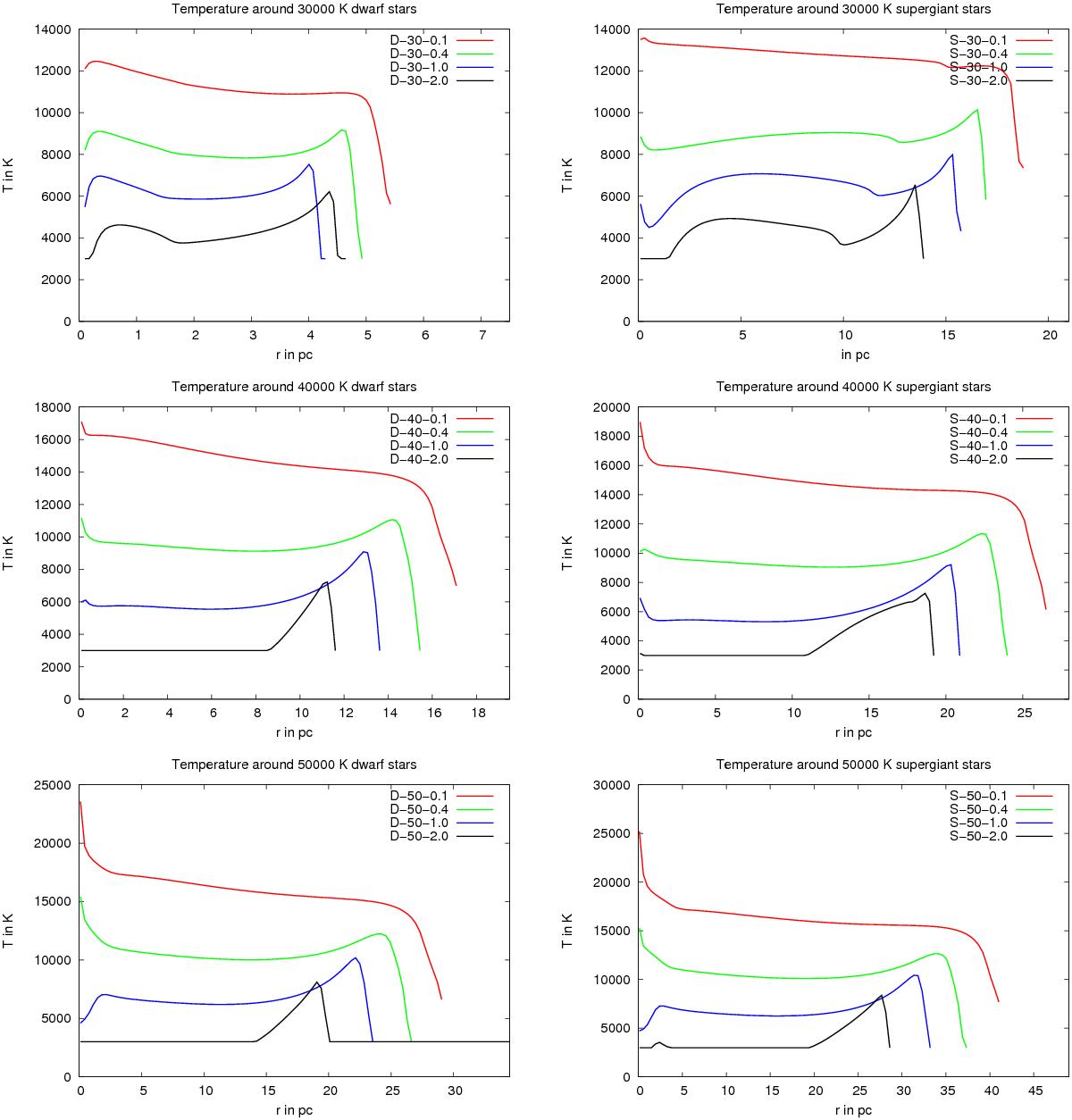Fig. A.9

Temperature structures of H ii regions around dwarf stars and supergiants of effective temperatures of 30 000 K, 40 000 K, and 50 000 K at different metallicities (using the same physical conditions for the gas as in Fig. A.7). The influence of the metallicity on the temperature of the gas is primarily a result of the reduced number of metal particles that contribute to the cooling of the gas (metal-poorer H ii regions are thus characterized by considerably higher temperatures than H ii regions with larger metal abundances), but it is also a result of the harder ionization spectra obtained for metal-poorer stars (see Figs. A.1–A.4), which results in a larger energy input by photoionization heating; the temperature of the gas therefore rises with decreasing metallicity of the irradiating stars (see also Fig. A.10).
Current usage metrics show cumulative count of Article Views (full-text article views including HTML views, PDF and ePub downloads, according to the available data) and Abstracts Views on Vision4Press platform.
Data correspond to usage on the plateform after 2015. The current usage metrics is available 48-96 hours after online publication and is updated daily on week days.
Initial download of the metrics may take a while.








